Motorcycle designers the world over must currently be asking themselves the question famously (and repeatedly) posed by Axl Rose a few years back, which is, “Where do we go now?”
The motorcycle market has softened a bit these days as the once-spendthrift boomers begin to ponder the advantages of downsizing or develop “issues” (which used to be called “dread diseases”) and simply quit riding. Or worse yet, suddenly drop dead.
Meanwhile, the more adventurous young among the 20-to-34-year-old millennials (now the largest segment of the US population) still flock to motorcycling, but their numbers are diminished somewhat as an increasing number choose to stare at small screens in the palms of their hands rather than embrace the terrors of the great outdoors. In other words, it’s a tough time for a motorcycle company to figure out exactly what people want and what will pull them into a showroom.
So it was with great interest that I threw helmet and gear bag into my new Alabama-built Honda Ridgeline pickup (my ancient blue Ford van having recently expired) and drove to Milwaukee to see what direction Harley-Davidson had taken in the design of its eight all-new Softail models. I’d considered arriving more stylishly and authentically on my Buell Ulysses, but the small screen in the palm of my wife’s hand predicted high heat and thunderstorms, so I effortlessly chose the truck.
This was said to be the largest product development project in Harley history, and in honor of this occasion our little gathering of French, Canadian, and American journalists was allowed a rare visit into the H-D Product Development Center. We also got a sneak peek into the “styling bunker,” where I half expected to see Alec Guinness poring over a map of Poland but instead found a cheerful room full of design sketches, color, and brightness. Employees had been warned on pain of death not to leave files stamped “TOP SECRET” lying around on their desks. No cameras. Phone lenses were taped over. All the new models were lined up with covers over them.
We all sat down at a table, and as the press conference got under way, the basic points were these:
- The Dyna designation is gone. The former Dyna and Softail models will now share a common frame, all under the Softail family name.
- The new frame is lighter, simpler, and stiffer, with a triangular swingarm unit pushing directly on a monoshock/spring under the seat (shades of my old Vincent Black Shadow), rather than using the conventional swingarm/twin shock layout of the Dyna or the push/pull spring units under the engine of the previous Softails.
- Milwaukee-Eight V-twins of 107 and (optional) 114ci will be used, now rigidly mounted in the frame for added stiffness, with twin counterbalancers to reduce chassis vibration. Oil-cooling only; no water for the Softail line. Both engines make more power than ever before.
- Engine oiling is now by wet sump, eliminating the traditional separate oil tank under the seat. This puts less heat into the rider, battery, and frame and also frees up room for the monoshock under the seat. The engine itself is tilted slightly forward to raise the rear primary drive casting and make it possible to have more cornering clearance on all models.
- Every part on the bikes has been redesigned to reduce weight, taking about 32 pounds off most models.
The Dynas and Softails have traditionally been the “something for everybody” family of Big Twins, so the rest of the changes between models involved ride height, much improved shock damping, new forks, increased rear suspension travel, a variety of handlebars and footpeg or floorboard positions, gas tanks of two different sizes (3.5 and 5.0 gallons), fork geometry, and wheel and tire combinations. And, of course, styling.
Ah, yes. Styling.
Nothing raises the precautionary hackles on the neck of the Harley traditionalist faster than the words “restyling” or “radical change,” and I’d been told that Harley hired a new head of styling named Brad Richards who was doing innovative things. Not too innovative, one hoped.
For most owners, a Harley is partly a motorcycle and partly a reassuring island of continuity in a world weary of nominal “progress,” which is often merely the over-application of technology or craft to problems that had already been solved more elegantly a hundred years ago.
And when we walked into the styling studio there was a 1950 hardtail Panhead (above) parked near the door, a heart-stopping landmark of design purity. I looked at it and suppressed the urge to shout out loud, “Just make that, with brakes and a modern engine!”
Well, I needn’t have worried.
As the bikes were unveiled, the immediate impression was of subtle and tasteful change that adapted itself nicely to the cleaner and simpler bones of the bike and its new frame. As the cover came off the new Softail Slim with a deep-red tank, my immediate reaction was that, even though I’m a serial FLH owner rather than a cruiser guy, I wouldn’t mind having one in the garage just to look at. Spare, classic Harley shapes, free of artifice.
Of course, not all Harley buyers are hair-shirt minimalists, so the Softail line includes bikes with considerably more swagger and bling. But even these have been done within the bounds of decency. The most radical new shape may be the “Atomic Age” headlight on the FLB Fat Boy, a mildly oval-ized form reminiscent of my parents’ 1957 DuMont TV, which actually fits the overall look of the bike quite nicely. Thankfully, they left off the rabbit ears. The new Breakout model also has a headlight with a bit of “take me to your leader” ray-gun effect, but, again, it fits the aggressive intent of the bike.
All these bikes, incidentally, have new LED headlights with a “signature” halo of brightness around the edge, intended to make the bike instantly recognized as a 2018 Harley, coming your way. (“Look, Mom, angels!”)
Okay. Enough art criticism. We all boarded a big, black Harley bus and headed off to Blackhawk Farms Raceway, just across the Illinois border near Beloit. This, by the way, is my home track. I started racing sports cars there in 1973 and was happily one of the first riders to take a bike (1975 Honda CB400 Four) out on the track. The owners wanted to see if the circuit was safe for motorcycle racing, so they invited four of us from WERA’s 400 Box Stock class to do an early spring lapping day in 1979. Naturally, we told them it was perfectly safe for bikes, and soon the place was shrouded in RD350 smoke every other weekend.
And now, 38 years later, we disembarked from the bus to find 22 Big Twins sitting in pit lane, in two columns of 11. We would be alternating between the current model 2017 Dyna and Softail models and the new replacement models, one pair at a time. Two laps with each bike, including a full stop and acceleration run down the front straight. No wheel-to-wheel racing and no passing; just stay well separated and try out the bikes at your own real-world pace. Good advice, since almost none of us had full leathers, and, in any case, I’d never done a trackday on a bike with forward controls and mini apehangers. Or floorboards.
Track-time limitations and the occasional short rain shower meant we essentially leapt from bike to bike like Pony Express riders for several hours, so there wasn’t a lot of philosophical pondering between stints, but the overall changes in the new bikes made themselves clearly felt.
Most significant to me was the improved handling with the new chassis and suspension, as well as the improved cornering clearance. On every model, the newer bike felt more unified, composed, and confidence inspiring, less a collection of scenic components and more a solid object. The Blackhawk circuit has a number of pavement changes where repairs have been made or the newer chicane was added, and, while these are basically a nonissue on four wheels, they can be disconcerting on two when you chatter across the uneven apex of a corner. Simply put, the new bikes handled these pavement changes with better fork and shock compliance and remained more settled and on line. They’re just easier to ride fast.
The H-D engineers’ attack on limited cornering clearance has also paid off. Floorboards that scraped on sweeping turn seven with a few of the “old” bikes didn’t on the new versions, even with the wick turned up. And when you’ve overcooked a corner, as I did at least once (but who’s counting?), this is worth a lot.
As mentioned, horsepower and torque have been raised on all the new Milwaukee-Eight engines, but I can’t claim to have had my mind boggled by the changes, at least on the track. All these bikes felt satisfyingly quick and torquey, and I think the improvements would be better appreciated in roll-on acceleration on the highway, relative to other traffic, which is where Harleys really work best.
Incidentally, some of the visiting journalists worried that, despite the solid engine mounts, the new twin counterbalancers in the engine would render the bikes overly smooth and serene, detracting from traditional H-D character, but I think they’ve left just enough vibration in to keep purists happy and the impure unaggravated. For those who still prefer the more fluid smoothness of rubber mounting, this system will be retained in the touring range of Harleys.
Overall, I would say the new bikes have combined the old Softail and Dyna lines quite seamlessly, improving both in nearly every way. It’s hard to argue with cleaner, lighter, simpler, faster, more comfortable, and better handling, with no loss in character. I also think the new frame architecture and styling have made them better looking but in a traditional rather than revisionist sense, bringing the bikes closer to their elemental roots, without making changes purely for the sake of change.
So in answer to that pressing question, “Where do we go now?” I would say sometimes we don’t have to go anywhere. We just have to keep getting better at what we already do.











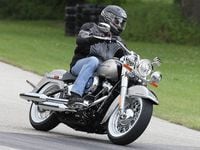
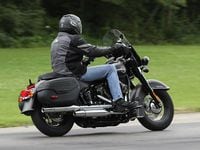
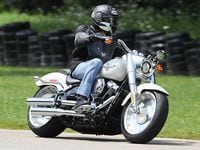
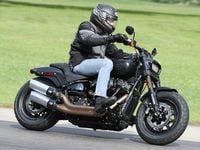
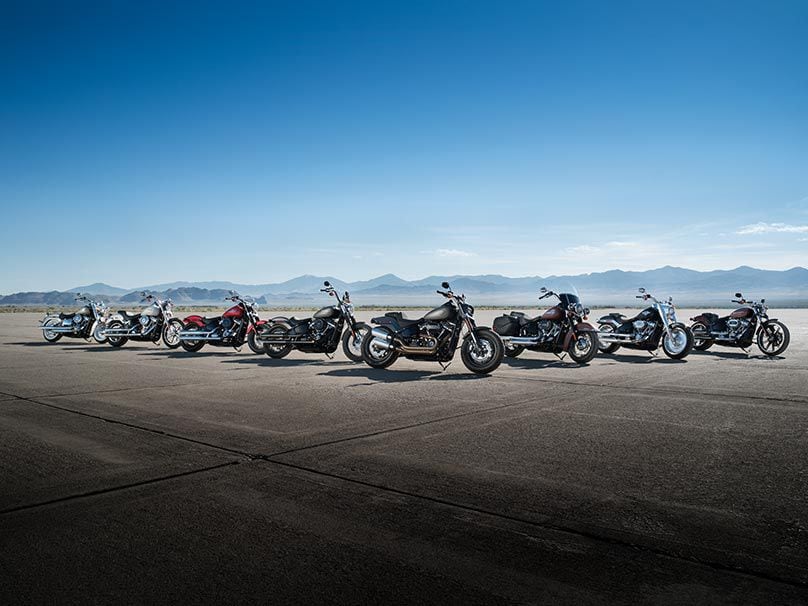
/cloudfront-us-east-1.images.arcpublishing.com/octane/A6O3TEZF45BVFG2KKOUMPWEYM4.jpg)
/cloudfront-us-east-1.images.arcpublishing.com/octane/MHVFMH2YN5DT3EOZPLXKNFP3VM.jpg)
/cloudfront-us-east-1.images.arcpublishing.com/octane/VILA5L7CTBGOJGDKM2YAOCR6VU.jpg)
/cloudfront-us-east-1.images.arcpublishing.com/octane/GZMZRTYRS5A75G2EJDDGXLJEEE.jpg)
/cloudfront-us-east-1.images.arcpublishing.com/octane/6KWAL3TFNJBGTJMJSKQ2C6I3IY.jpg)
/cloudfront-us-east-1.images.arcpublishing.com/octane/GK5I5R3X7JCABGCKAKT4XY2K7U.jpg)


/cloudfront-us-east-1.images.arcpublishing.com/octane/RGUT3Y65IFGDFMLHQ3U7G5UUQE.jpg)
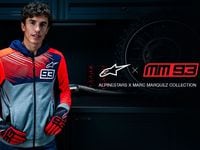
/cloudfront-us-east-1.images.arcpublishing.com/octane/37CSHD6CKRHYXHRB67EOLDS6XM.jpg)
/cloudfront-us-east-1.images.arcpublishing.com/octane/FYB7GKDGLVE3JKXMM75JTG2RYA.jpg)
/cloudfront-us-east-1.images.arcpublishing.com/octane/3ECVMM622VAZHIOLI6Q6ILWULU.jpg)
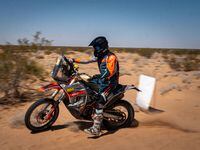
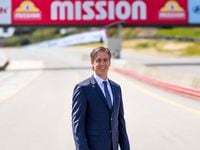
/cloudfront-us-east-1.images.arcpublishing.com/octane/UIZQ7VXRCRHBVDFK5RFJIEBBAU.jpg)

/cloudfront-us-east-1.images.arcpublishing.com/octane/QXBJ4CVEEBG2BF5O3TOPIGP7ZE.jpg)
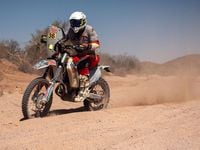
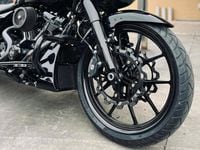
/cloudfront-us-east-1.images.arcpublishing.com/octane/HGNDJUKK4FHNTP5XEYYHWVW6NI.jpg)
/cloudfront-us-east-1.images.arcpublishing.com/octane/GDGQOIQBDBCXLIUZUEMCP2C5ZE.jpg)
/cloudfront-us-east-1.images.arcpublishing.com/octane/M6Z3IHJEAZE4XDQGCFN7YPJEOA.jpg)
/cloudfront-us-east-1.images.arcpublishing.com/octane/L6GYTNOQB5FOXPUZIQZYQSJ3PI.jpg)